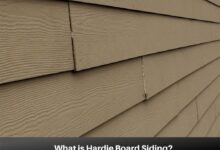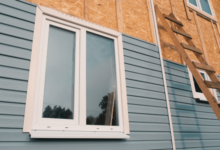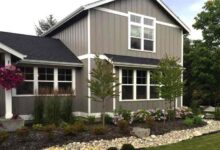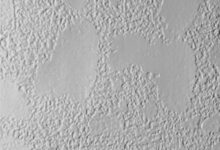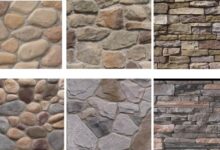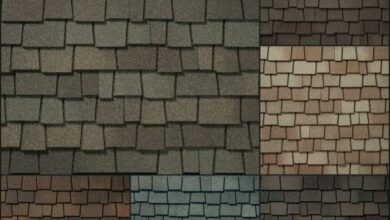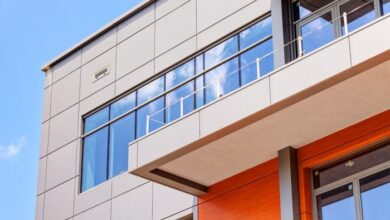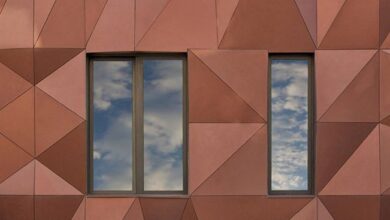HardiePlank Lap Siding A Complete Guide
HardiePlank lap siding: the name itself evokes images of durable, low-maintenance exteriors. But what exactly makes this fiber cement siding stand out from the crowd? This comprehensive guide dives deep into every aspect of HardiePlank, from its composition and installation to its long-term cost-effectiveness and environmental impact. We’ll explore the design possibilities, compare it to other siding materials, and answer your burning questions, leaving you with all the knowledge you need to make an informed decision for your next home improvement project.
We’ll cover everything from the intricacies of its manufacturing process and the nuances of installation to the aesthetic versatility and long-term value proposition. Get ready to transform your understanding of HardiePlank lap siding and unlock its full potential.
HardiePlank Lap Siding
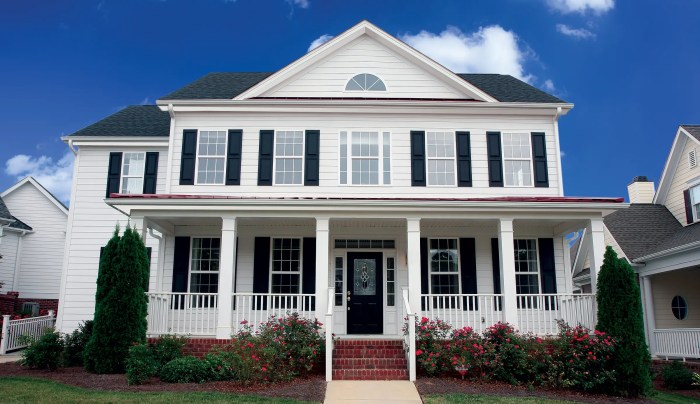
HardiePlank lap siding, a popular choice for homeowners seeking a durable and aesthetically pleasing exterior, offers a compelling blend of performance and longevity. Understanding its material properties is crucial for making informed decisions about your home’s exterior. This section delves into the composition, manufacturing, and performance characteristics of HardiePlank, comparing it to other common siding materials.
HardiePlank Composition and Manufacturing
HardiePlank lap siding is primarily composed of fiber cement, a composite material made from Portland cement, cellulose fibers, and other additives. The cellulose fibers, typically derived from recycled wood pulp, provide tensile strength and workability to the mixture. Portland cement acts as the binder, providing the necessary hardness and durability. Additives, such as silica sand, are included to enhance specific properties, like water resistance and overall strength. The manufacturing process involves mixing these ingredients, forming them into the desired shape (lap siding profiles), and then curing them under controlled conditions, typically involving high pressure and temperature, to achieve the final strength and density. This process results in a siding that’s remarkably resistant to the elements.
HardiePlank Durability Compared to Other Siding Materials
The durability of HardiePlank significantly surpasses that of many other siding options. Its inherent strength and resistance to damage from impact, moisture, and insects make it a long-lasting choice. Let’s compare it to vinyl and wood siding:
| Material | Durability | Cost | Maintenance |
|---|---|---|---|
| HardiePlank | High; resists impact, rot, insects, and fire. Lifespan often exceeding 50 years. | Medium-High | Low; occasional cleaning and repainting (every 10-15 years depending on climate). |
| Vinyl | Moderate; susceptible to cracking, fading, and damage from impact. Lifespan typically 20-30 years. | Low-Medium | Low; occasional cleaning. |
| Wood | Low-Medium; susceptible to rot, insect infestation, and damage from weather. Lifespan varies greatly depending on wood type and maintenance; often requires significant upkeep. | Medium-High (depending on wood type) | High; regular painting, staining, and potential repairs. |
HardiePlank Fire and Water Resistance
HardiePlank’s fire resistance is a key advantage. It’s classified as a non-combustible material, meaning it doesn’t readily ignite or contribute to the spread of fire. This significantly enhances the fire safety of a home. Numerous building codes recognize and mandate its use in high-fire-risk areas. Furthermore, its water resistance is exceptional. The dense fiber cement composition prevents moisture absorption, significantly reducing the risk of rot, mold, and mildew. This makes it an ideal choice for regions with high humidity or frequent rainfall. While not completely impervious to water, its resistance minimizes the potential for water damage compared to wood siding, reducing the need for extensive repairs. Proper installation, however, remains crucial to maintain optimal water resistance. For example, ensuring proper caulking and flashing around windows and doors is essential to prevent water penetration behind the siding.
HardiePlank Lap Siding
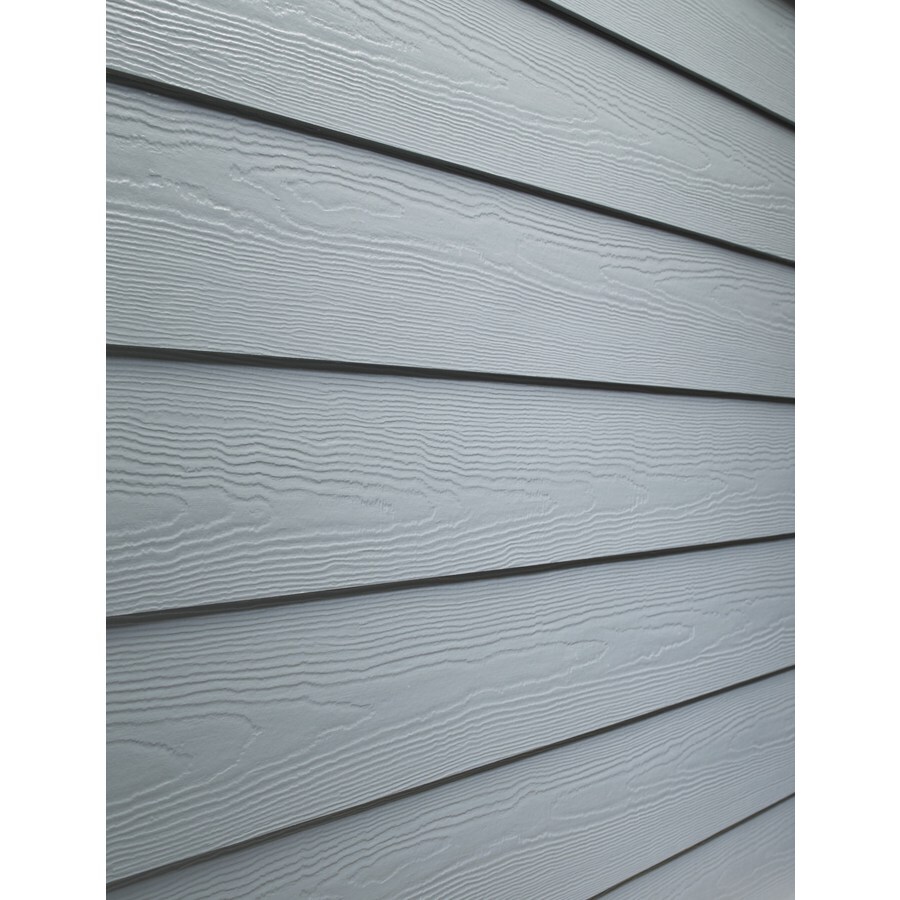
HardiePlank lap siding offers a durable and aesthetically pleasing exterior cladding solution for homes. Its cement composition provides superior resistance to fire, rot, insects, and harsh weather conditions, making it a popular choice for homeowners seeking long-term value and low maintenance. This section delves into the specifics of HardiePlank installation and maintenance, providing a comprehensive guide to ensure a successful project and the longevity of your siding.
HardiePlank Lap Siding Installation
Proper installation is crucial for maximizing the lifespan and performance of HardiePlank siding. A well-executed installation ensures a watertight barrier, prevents damage from wind and weather, and maintains the siding’s aesthetic appeal. The following steps Artikel the process:
- Prepare the Wall: Begin by thoroughly cleaning the wall surface, removing any loose paint, debris, or old siding. Repair any damaged areas of the sheathing, ensuring a smooth and level substrate. This step is vital for proper adhesion and to prevent future issues. Consider using a moisture meter to check for excessive moisture in the wall before proceeding.
- Install Flashing and Water Barriers: Install flashing around windows, doors, and other penetrations to prevent water intrusion. Apply a water-resistant barrier, such as housewrap, over the sheathing to create an additional layer of protection against moisture. Proper flashing and housewrap installation are critical for preventing water damage.
- Install Starter Strips: Begin installation by attaching starter strips along the bottom of the wall, providing a level base for the first row of siding. Ensure the starter strips are properly aligned and secured to maintain a consistent look throughout the installation.
- Install the First Row of Siding: Starting at the bottom, install the first row of HardiePlank siding, ensuring proper overlap and alignment. Use appropriate fasteners, spacing them correctly to allow for expansion and contraction. Consistent spacing is key for a professional finish.
- Continue Installation: Continue installing subsequent rows of siding, maintaining consistent overlap and alignment. Use a level to ensure each row is straight and plumb. Regularly check your work to catch any inconsistencies early on.
- Install J-Channel and Trim: Finish the installation by installing J-channel around windows, doors, and corners. Add trim pieces to complete the project, creating a neat and finished look. Proper trim installation enhances the aesthetic appeal and protects vulnerable areas.
- Caulk and Seal: Apply caulk to all seams and joints to seal out moisture. Pay close attention to areas around windows, doors, and corners. Thorough caulking is essential for water resistance.
Preparing the Wall Surface for HardiePlank Installation
Surface preparation is paramount for a successful HardiePlank installation. A poorly prepared surface can lead to issues such as uneven siding, poor adhesion, and premature failure. Key aspects of wall preparation include:
- Cleaning: Remove all loose debris, dirt, and old paint. A pressure washer can be effective, but be cautious not to damage the underlying sheathing. Thorough cleaning ensures proper adhesion.
- Repairing Damaged Areas: Repair any damaged areas of the sheathing, such as rotted wood or damaged areas. Replace any damaged sections with new, appropriately treated lumber. Repairing damage prevents future problems.
- Leveling: Ensure the wall surface is level and plumb. Use shims to adjust uneven areas, creating a smooth surface for the siding. A level surface ensures proper alignment and aesthetics.
- Moisture Check: Use a moisture meter to check for excessive moisture in the wall. High moisture content can lead to problems with adhesion and mold growth. Moisture testing is crucial for preventing future issues.
Common HardiePlank Installation Issues and Solutions
While HardiePlank is relatively easy to install, some common issues can arise. Addressing these promptly prevents larger, more costly repairs down the line.
- Uneven Siding: Caused by an uneven wall surface or improper installation. Solution: Check for levelness throughout the installation and use shims as needed. Re-install affected sections.
- Nail Pops: Nails that work their way out of the siding. Solution: Use appropriate fasteners and countersink nails properly. Re-nail any popped nails.
- Water Intrusion: Caused by improper flashing or caulking. Solution: Inspect all seams and joints for leaks. Reapply caulk and repair any damaged flashing.
- Cracking: Caused by improper handling or expansion/contraction. Solution: Replace cracked sections immediately. Ensure proper spacing during installation.
HardiePlank Lap Siding Preventative Maintenance Schedule
Regular maintenance extends the life of your HardiePlank siding. A proactive approach prevents minor issues from escalating into major problems.
- Annual Inspection: Inspect the siding for any damage, such as cracks, loose nails, or water damage. Address any issues promptly.
- Cleaning: Clean the siding annually using a pressure washer or a garden hose with a soft brush. Remove any dirt, debris, or mildew. Regular cleaning maintains appearance and prevents damage.
- Caulk Inspection and Repair: Inspect caulking around windows, doors, and other penetrations. Reapply caulk as needed to maintain a watertight seal. Caulk is critical for water resistance.
- Repair Damaged Sections: Repair any damaged sections of siding promptly. Ignoring minor damage can lead to more extensive repairs later. Prompt repairs prevent further damage.
HardiePlank Lap Siding
HardiePlank lap siding offers a durable and aesthetically pleasing exterior cladding option for homes. Its versatility in design and color allows for a wide range of architectural styles and personal preferences. This section delves into the design and aesthetic aspects of HardiePlank lap siding, exploring its color options, compatibility with different architectural styles, and visual comparison with other siding materials.
HardiePlank Lap Siding Color and Texture Options
James Hardie offers a comprehensive palette of colors and textures for its lap siding, ensuring homeowners can find the perfect match for their home’s style and surroundings. The color options range from classic neutrals like beige and gray to bolder shades like deep blues and reds. These colors are designed to withstand the elements and maintain their vibrancy over time. Furthermore, the textures mimic the look of natural wood, offering a realistic and visually appealing finish. Options include smooth, cedar-like, and woodgrain textures, each contributing a unique aesthetic to the final product. This broad selection allows for customization and ensures that the siding complements the overall design of the house seamlessly.
HardiePlank Lap Siding and Architectural Styles
HardiePlank lap siding’s adaptability makes it suitable for a variety of architectural styles. Its clean lines and versatile color palette complement contemporary homes, while its ability to mimic wood grain allows it to integrate seamlessly into traditional designs. For instance, a craftsman-style home might benefit from the use of darker, earth-toned HardiePlank with a woodgrain texture, providing a warm and inviting aesthetic. Conversely, a modern home might look stunning with sleek, smooth HardiePlank in a cool, neutral tone. The siding’s ability to be installed vertically or horizontally also offers further design flexibility, adapting to diverse architectural needs and preferences.
Visual Appeal and Cost Comparison of Siding Options
The following table compares the visual appeal, cost, and maintenance requirements of HardiePlank lap siding with other popular siding options. Note that costs can vary significantly based on factors such as location, labor costs, and the complexity of the installation.
| Siding Type | Visual Appeal | Cost | Maintenance |
|---|---|---|---|
| HardiePlank Lap Siding | Versatile; mimics wood; available in various colors and textures. | Mid-range to high | Low; requires occasional cleaning. |
| Vinyl Siding | Wide range of colors and styles; generally less realistic than HardiePlank. | Low to mid-range | Low; easy to clean. |
| Wood Siding | Natural look and feel; requires regular maintenance. | High | High; susceptible to rot, insect damage, and fading. |
| Aluminum Siding | Durable and low-maintenance; limited color and texture options. | Mid-range | Low; requires occasional cleaning. |
HardiePlank Lap Siding in Various Home Exterior Designs
The adaptability of HardiePlank lap siding is evident in its application across diverse home exterior designs.
- Coastal Farmhouse: Imagine a two-story home with a wraparound porch. The siding is a soft, weathered gray HardiePlank with a subtle woodgrain texture, complementing the home’s relaxed, beachy vibe. White trim and a dark gray roof provide a striking contrast, enhancing the overall aesthetic. The natural tones evoke a sense of tranquility and seamlessly integrate the home into its surroundings.
- Modern Minimalist: A clean, linear home with large windows and a flat roof is clad in smooth, charcoal gray HardiePlank. The dark siding creates a sophisticated and modern look, while the minimalist design emphasizes the architectural lines of the home. This design exemplifies how HardiePlank can be used to achieve a sleek, contemporary feel.
- Traditional Colonial: A stately colonial home with a symmetrical facade is covered in creamy white HardiePlank lap siding. The crisp, clean lines of the siding complement the home’s classic architecture. Dark green shutters and a black roof provide a dramatic contrast, enhancing the home’s stately appearance. This design illustrates how HardiePlank can be employed to achieve a timeless, elegant look.
HardiePlank Lap Siding
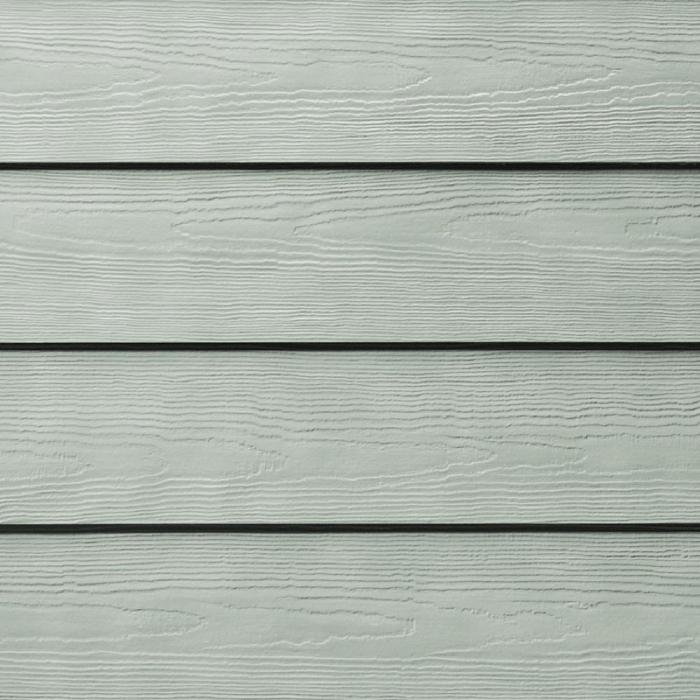
HardiePlank lap siding offers a compelling blend of durability, aesthetics, and longevity, making it a popular choice for homeowners seeking a high-quality exterior finish. However, understanding the associated costs and long-term value is crucial before making a decision. This section delves into the financial aspects of HardiePlank installation, providing a clear picture of what to expect.
HardiePlank Lap Siding Cost Factors
Several factors significantly influence the overall cost of installing HardiePlank lap siding. These include the size of the house, the complexity of the project (e.g., the number of corners, windows, and doors), the chosen color and texture of the siding, and regional labor rates. The cost of materials themselves, which fluctuate based on market conditions and supply chains, also plays a significant role. Furthermore, the need for additional work, such as removing existing siding or addressing underlying structural issues, can add substantial expense. Finally, permit fees vary considerably by location and project scope.
HardiePlank vs. Other Siding Materials: Long-Term Cost-Effectiveness
Comparing HardiePlank’s long-term cost-effectiveness to other siding materials requires a comprehensive analysis. While the upfront cost of HardiePlank may be higher than vinyl or aluminum siding, its superior durability and significantly longer lifespan often result in lower overall long-term costs. Vinyl siding, for instance, might require replacement after 15-20 years, incurring substantial costs. Aluminum siding, while durable, is prone to denting and can be more susceptible to damage from hail. HardiePlank’s resistance to rot, insects, fire, and impact damage, coupled with its 30-year warranty (or even longer depending on specific product lines and warranty coverage), translates to fewer maintenance expenses and a longer lifespan, making it a financially sound investment over the long term. For example, a homeowner might spend $10,000 on vinyl siding, requiring replacement at $10,000 after 15 years, totaling $20,000 over 30 years. A comparable HardiePlank installation, costing $15,000 initially, may only require minor repairs over the same period, resulting in significantly lower overall costs.
HardiePlank Installation Cost Breakdown
The following table provides a breakdown of the estimated costs associated with HardiePlank installation. These figures are approximate and can vary based on location, project specifics, and contractor choices.
| Cost Item | Estimated Cost | Notes | Percentage of Total Cost |
|---|---|---|---|
| Materials (HardiePlank, fasteners, etc.) | $6,000 – $12,000 | Varies based on house size, siding type, and color choices. | 30% – 40% |
| Labor | $8,000 – $16,000 | Labor costs are highly dependent on location and project complexity. | 40% – 50% |
| Permits | $500 – $1,500 | Permit fees vary significantly by location and project scope. | 2.5% – 7.5% |
| Preparation/cleanup | $500 – $1,000 | Includes removing existing siding, if necessary, and post-installation cleanup. | 2.5% – 5% |
| Total Estimated Cost | $15,000 – $30,000 | This is a broad estimate and can vary significantly. | 100% |
HardiePlank and Home Resale Value
Investing in high-quality siding like HardiePlank can significantly enhance a home’s curb appeal and, consequently, its resale value. Potential buyers are often willing to pay a premium for homes with well-maintained exteriors that require minimal upkeep. The durability and longevity of HardiePlank can be a significant selling point, potentially justifying a higher asking price compared to homes with older or less durable siding. Real estate appraisals often reflect the increased value attributed to superior exterior materials like HardiePlank. For example, a home with upgraded HardiePlank siding might command a 5-10% higher selling price than a comparable home with vinyl siding, depending on the market and the overall condition of the property. This increased resale value can easily offset the initial higher investment in HardiePlank over the long term.
HardiePlank Lap Siding
HardiePlank lap siding, a popular choice for homeowners, offers durability and aesthetic appeal. However, understanding its environmental impact is crucial for making informed decisions. This section delves into the manufacturing process, disposal methods, sustainability certifications, and compares its environmental footprint to other siding materials.
HardiePlank Lap Siding Manufacturing and Disposal
The manufacturing of HardiePlank involves a complex process utilizing cement, cellulose fibers, and other additives. This process consumes energy and generates waste, contributing to its carbon footprint. The energy intensity is primarily associated with the cement production stage, a known significant contributor to greenhouse gas emissions. Disposal typically involves sending the siding to landfills, though some regions offer recycling programs for specific components. The longevity of the product means less frequent replacement, potentially offsetting some of the initial manufacturing impact.
HardiePlank Sustainability Certifications and Initiatives
While not universally recognized as a fully “green” product, James Hardie, the manufacturer of HardiePlank, participates in various sustainability initiatives. These efforts often focus on reducing energy consumption during manufacturing, improving waste management practices, and sourcing materials responsibly. Specific certifications may vary by region and product line, so it’s crucial to check the manufacturer’s website for the most up-to-date information regarding certifications and environmental claims. For example, some product lines might boast certifications related to sustainable forestry practices for the cellulose fiber content.
Environmental Footprint Comparison of Siding Materials
The environmental impact of siding materials varies considerably. Below is a comparison of HardiePlank with other common options, keeping in mind that precise figures can fluctuate based on manufacturing processes, transportation distances, and end-of-life management.
| Material | Manufacturing Impact | Lifespan (Years) | Disposal Method |
|---|---|---|---|
| HardiePlank | High energy consumption due to cement production; moderate waste generation. | 50+ | Landfill; some recycling programs available regionally for specific components. |
| Vinyl Siding | High energy consumption during manufacturing; potential for toxic emissions. | 20-30 | Landfill; limited recycling options. |
| Wood Siding | Variable depending on sourcing and treatment; potential deforestation concerns. | 20-40 | Landfill; potential for repurposing or firewood. |
| Aluminum Siding | High energy consumption during manufacturing; recyclable. | 40+ | Recycling; landfill. |
HardiePlank Siding Recyclability and Repurposing
The recyclability of HardiePlank is limited. While the material itself isn’t easily recycled in standard municipal programs, some regions have initiatives focusing on specific components of the siding, such as reclaiming the fiber content. Repurposing options are similarly restricted. However, due to its durability, salvaged HardiePlank could potentially be used in smaller projects, such as retaining walls or garden edging, though this is not a widespread practice. The emphasis remains on its long lifespan to minimize the frequency of replacement and the resultant environmental burden.
Ultimately, the decision to choose HardiePlank lap siding hinges on a careful consideration of your budget, aesthetic preferences, and long-term goals. While the initial investment might be higher than some alternatives, the durability, low maintenance, and increased home value it offers make a compelling case for its superior long-term value. This guide has equipped you with the knowledge to weigh the pros and cons, allowing you to confidently choose the best siding solution for your home, ensuring a beautiful and enduring exterior for years to come.
FAQ Summary
What is the average lifespan of HardiePlank siding?
HardiePlank siding is designed to last for 30-50 years or more with proper installation and maintenance.
Can HardiePlank be painted?
Yes, HardiePlank can be painted with high-quality exterior paint designed for fiber cement. Proper preparation is crucial for optimal adhesion and longevity.
Does HardiePlank require special tools for installation?
While standard tools are used, specific tools like a circular saw with a carbide-tipped blade designed for fiber cement are recommended for clean cuts and to prevent damage to the blade.
How do I clean HardiePlank siding?
Regular cleaning with a garden hose and a soft brush is usually sufficient. For tougher stains, a mild detergent solution can be used. Avoid pressure washing, as it can damage the siding.
Is HardiePlank susceptible to mold or mildew?
While HardiePlank is resistant to mold and mildew, regular cleaning and proper ventilation can prevent their growth.
